Original URL: https://www.theregister.com/2007/07/19/forgotten_tech_ibm_thinkpad/
The IBM ThinkPad: 15 years old today
The iconic black laptop celebrates its birthday
Posted in Personal Tech, 19th July 2007 08:02 GMT
Forgotten Tech The ThinkPad is 15 today. Sort of. Launched by IBM and now made by Lenovo, the black-clad laptop family quickly established itself as an icon, in many ways re-establishing Big Blue's reputation as a PC maker after years in the shadow of the clone manufacturers.
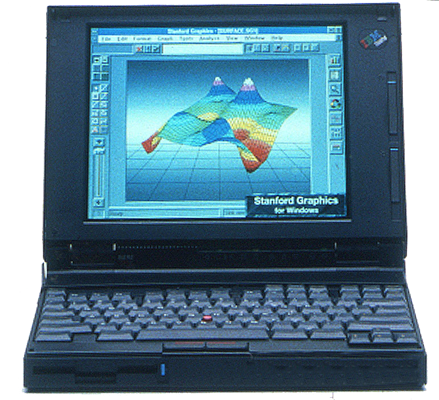
IBM's ThinkPad 700C
The first two clamshell-styled ThinkPads, the 700 and the 700C, were launched on 5 October 1992. Some people claim they were announced at Comdex Fall, but that took place more than a month later, on 16-20 November. Still, the new notebooks would have had their first full public outing at the show.
But if they didn't appear until 5 October, why is today the ThinkPad's birthday? Read on...
The 700 was based on a 25MHz Intel 486SLC processor backed by 4MB of memory and a choice of 80MB or 120MB hard drive. Its screen was a 9.5in, 640 x 480 monochrome job, physically smaller than the 10.4in, 640 x 480 active-matrix colour screen fitted to the premium-priced 700C. The higher-end model had the same processor as the 700, but a removable 120MB hard drive came as standard though buyers could choose either 4MB, 8MB or 16MB of memory.
Both machines contained nickel metal hydride batteries good for almost four hours' use, IBM claimed at launch. The 700C weighed in at 3.5kg (7.6lb), while the 700 was 3kg (6.5lb). The price was hefty too: a cool $4,350, worth rather more in 1992 than it is today. The 80MB 700 cost $2750, the 120MB version $2950.
No great innovation among those specs, but the ThinkPad did introduce - or at least popularise - the TrackPoint controller, a tiny joystick built into the keyboard between the G and H keys, in place of a touchpad or, in those days, a touchball.
The 700 and 700C could each be connected to a specific version of the 3550 Expansion Unit, a docking unit IBM introduced on the same day. The 3550 allowed users to connect SCSI devices, and added VGA, keyboard and mouse ports, along with serial and parallel connectors.
On 5 October 1992, IBM also introduced the ThinkPad 300, actually made by Zenith Data Systems. It was powered by a 25MHz 386SL processor and fitted with a monochrome 640 x 480 display. Again, it shipped with 4MB of memory and a choice of 80MB or 120MB hard drive. And it too had an Ethernet port.
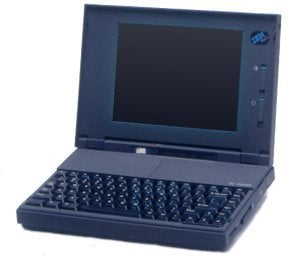
IBM's ThinkPad 300: slower than the 700 but longer-running
If the 700 series' selling point was performance, the 300's was battery life. The laptop was said to be capable of running for up to ten hours - unthinkable by today's standards. The suggested retail price for the 80MB ThinkPad 300 was $2375, while the model with the 120MB drive cost $2575.
The ThinkPads 300, 700 and 700C defined the core design of the laptop line, defining the way their successor would look right up to the present day. That arguably makes them the first true ThinkPads as we understand the brand name today. But they weren't the first IBM machines to carry the ThinkPad moniker.
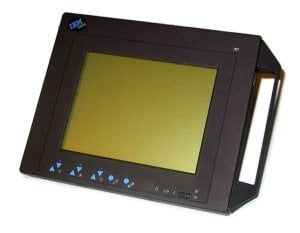
IBM's 2521 ThinkPad... er... ThinkPad 700T
That honour goes to the IBM 2521 ThinkPad - known at the time as the ThinkPad - a pen-operated portable that Big Blue actually announced on 17 April 1992, but which didn't ship until the following July - hence, according to Lenovo, today's anniversary. It comprised a 20MHz 386SX processor, 4MB or 8MB of memory, a 10in, 640 x 480 monochrome display and a built-in 2.4Kbps modem. Serial and parallel ports, and connectors for an external floppy drive and a keyboard, were part of the spec too.
Amazingly in an era long before the current debate over the future of hard drive technology and the emergence of Flash-based alternatives, the 2521 incorporated a 20MB solid-state drive. The 2521 ran PenPoint, an tablet-oriented operating system from Go Corporation.
Come 5 October, IBM renamed the 2521 the ThinkPad 700T to bring its naming into line with the three new laptop models. It also tweaked the design slightly to make it more robust.
The following year, on 4 May, IBM rolled out the ThinkPad 720 and 720C, upping the original 700-series models' 25MHz processor with a 50MHz version.
On 16 June 1993, Big Blue announced the ThinkPad 500, described at the time as its first sub-notebook. Retailing for $1999 and measuring 25.3 x 18.8 x 4cm, it was based on a 50MHz 486SLC2 processor and offered with a choice of 85MB or 170MB hard drive - for an extra $500. The AC adaptor was built in to allow the 500 to be connected directly to the mains, saving users from having to lug around a power brick too.
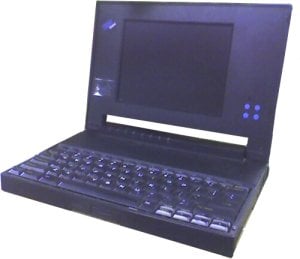
IBM's ThinkPad 500: its first sub-notebook
The 350 and 350C built on the original 300, upping the CPU to a 25MHz 486SL from the earlier machine's 386-class chip and increasing the choice of storage capacities to 125MB and 250MB. The two 350s cost $1999 and $2499, while the two 350Cs were priced at 2599 and 2999.
1993 and the years to come would see further tweaks to these models, alongside some curious variations: the ThinkPad 220 compact sub-notebook in 1993, followed by the 800 series of PowerPC-based laptops in 1995. That year also saw the introduction of the ThinkPad PC110, handheld PC only made available to Japanese buyers.
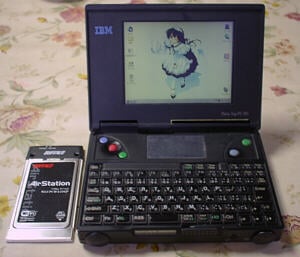
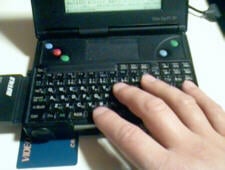
IBM's PC110: the first palmtop ThinkPad
The PC110 was based around a 4.7in 640 x 480 passive matrix colour display and featured a 33MHz 486-class processor, 20MB of memory and an internal 4MB Flash card for permanent storage. It also had a 2.4Kbps modem. It even had side-mounted LCD strip to display battery status information and the like.
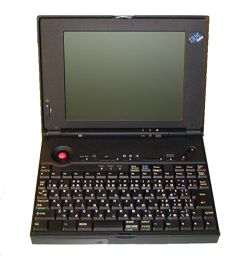
IBM's ThinkPad 220: its first sub-sub-notebook
The 220 was also intended for Asian buyers. Measuring 22.6 x 16.6 x 3.2cm, it packed in a 16MHz 386SL processor, 2MB of memory, an 80MB hard drive, a PCMCIA slot and a 7.7in 640 x 480 display. It was powered by six AA batteries.
More Forgotten Tech...
• 15 years ago: the first mass-produced GSM phone
• Compact Disc: 25 years old today
• From 1981: the World's first UMPC
• Apple's first handheld: the Newton MessagePad
• Atari's Portfolio: the world's first palmtop
• 'Timna' - Intel's first system-on-a-chip
• BeOS: the Mac OS X might-have-been
• Sony's first Mylo